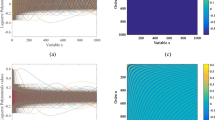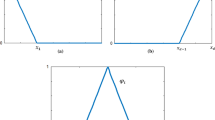Abstract
In pattern recognition, the choice of features to be detected is a critical factor to determine the success or failure of a method; much research has gone into finding the best features for particular tasks [1]. When images are detected by digital cameras, they are usually acquired as rectangular arrays of pixels, so the initial features are pixel values. Some methods use those pixel values directly for processing, for instance in normal matched filtering [2], whereas other methods execute some degree of pre-processing, such as binarizing the pixel values [3].
Chapter PDF
Similar content being viewed by others
Keywords
These keywords were added by machine and not by the authors. This process is experimental and the keywords may be updated as the learning algorithm improves.
References
R. O. Duda and P. E. Hart, Pattern Classification and Scene Analysis, Wiley, New York, (1973). Chapter. 1.
A. Vander Lugt, A. VanderLugt, “ IEEE Trans. Inf. Theory, IT-10, 139–145 (1964).
B. V. K. V. Kumar and D. Casasent, Appl. Opt. 20, 143–147, (1980).
P. Garcia-Martinez and H. H. Arsenault, Opt. Commn. 172, 181–192 (1999).
Author information
Authors and Affiliations
Editor information
Editors and Affiliations
Rights and permissions
Copyright information
© 2000 Springer-Verlag Berlin Heidelberg
About this paper
Cite this paper
García-Martínez, P., Arsenault, H.H., Ferreira, C. (2000). A Statistical Matrix Representation Using Sliced Orthogonal Nonlinear Correlations for Pattern Recognition. In: Ferri, F.J., Iñesta, J.M., Amin, A., Pudil, P. (eds) Advances in Pattern Recognition. SSPR /SPR 2000. Lecture Notes in Computer Science, vol 1876. Springer, Berlin, Heidelberg. https://doi.org/10.1007/3-540-44522-6_84
Download citation
DOI: https://doi.org/10.1007/3-540-44522-6_84
Published:
Publisher Name: Springer, Berlin, Heidelberg
Print ISBN: 978-3-540-67946-2
Online ISBN: 978-3-540-44522-7
eBook Packages: Springer Book Archive





